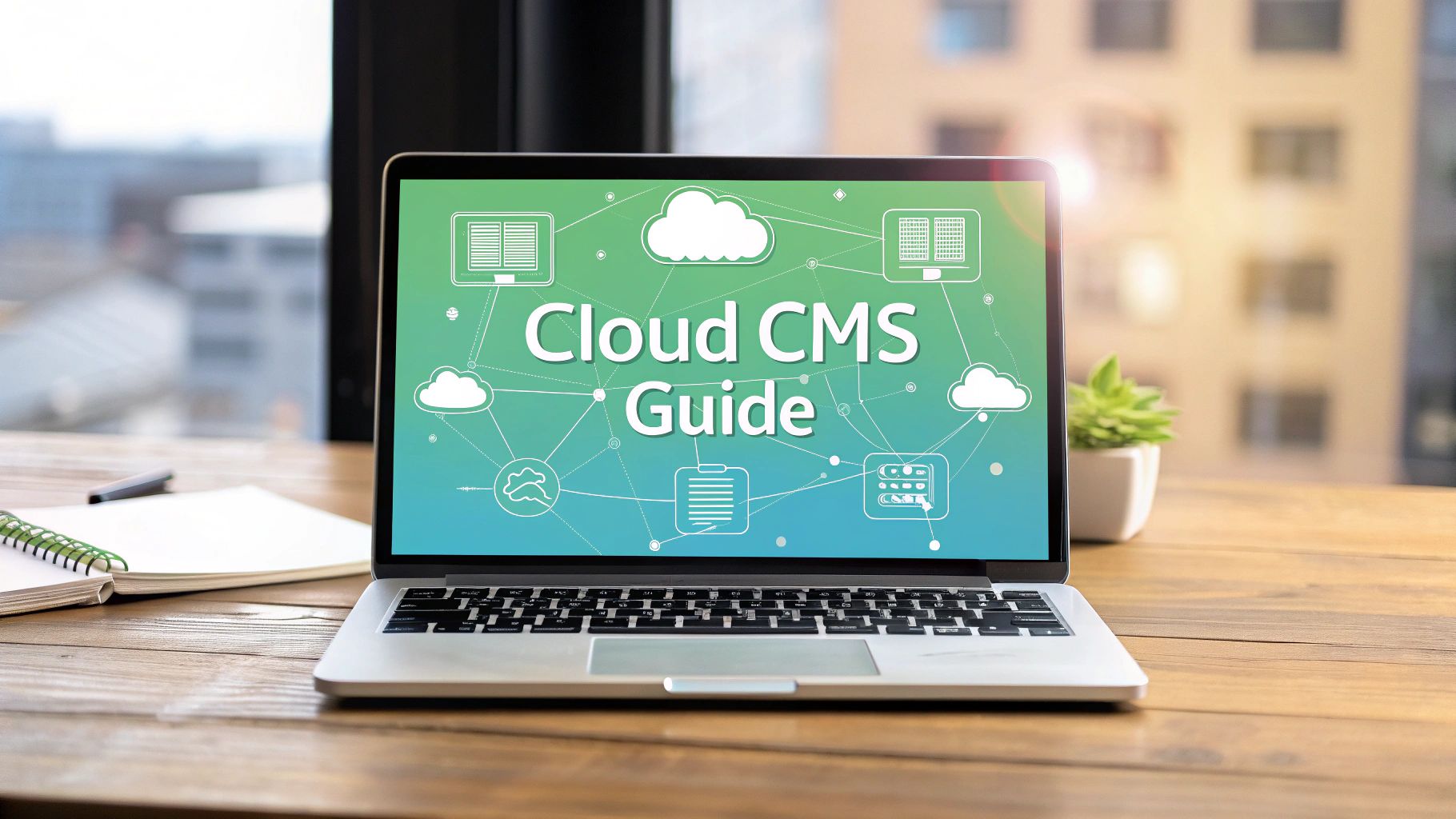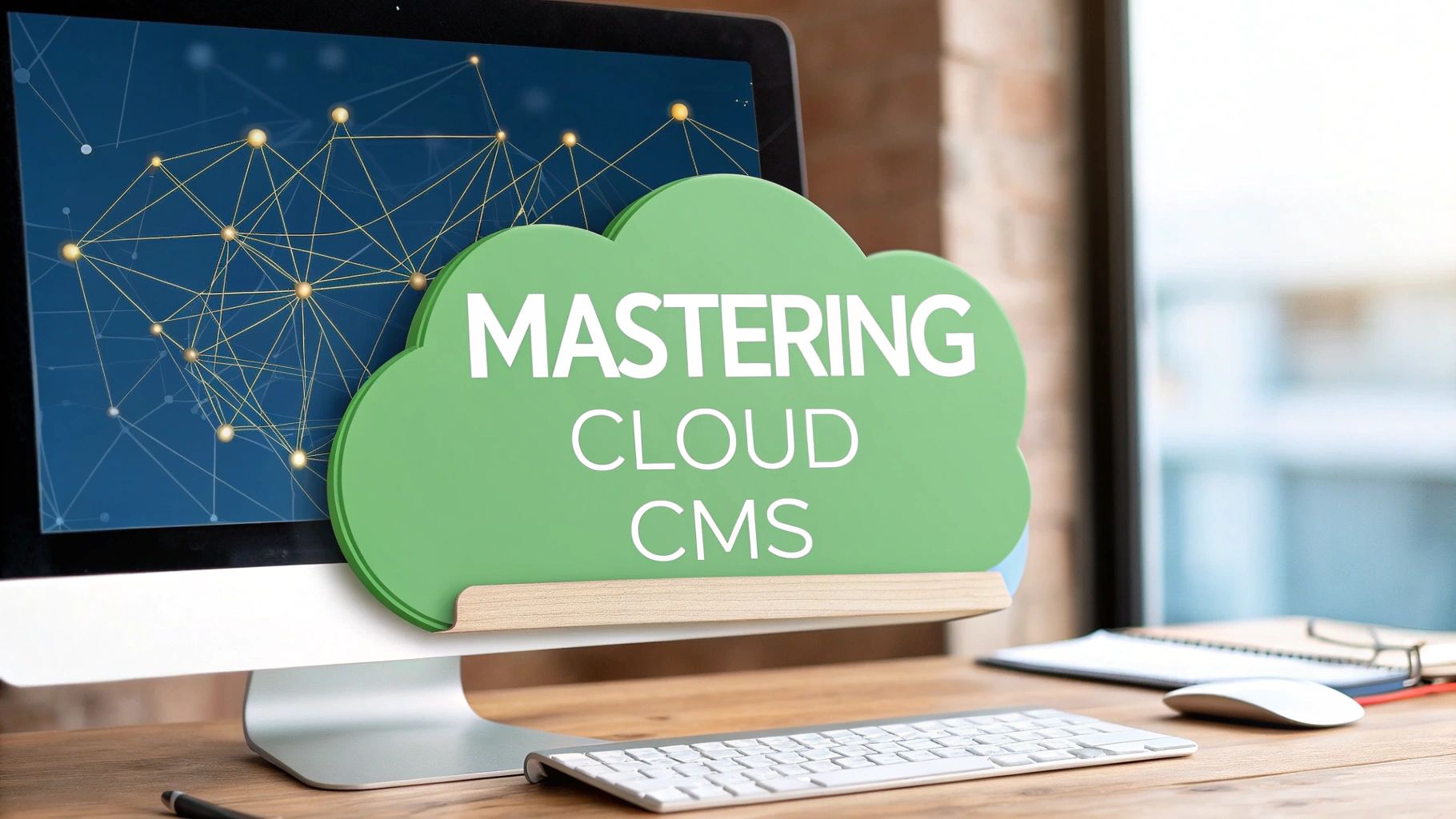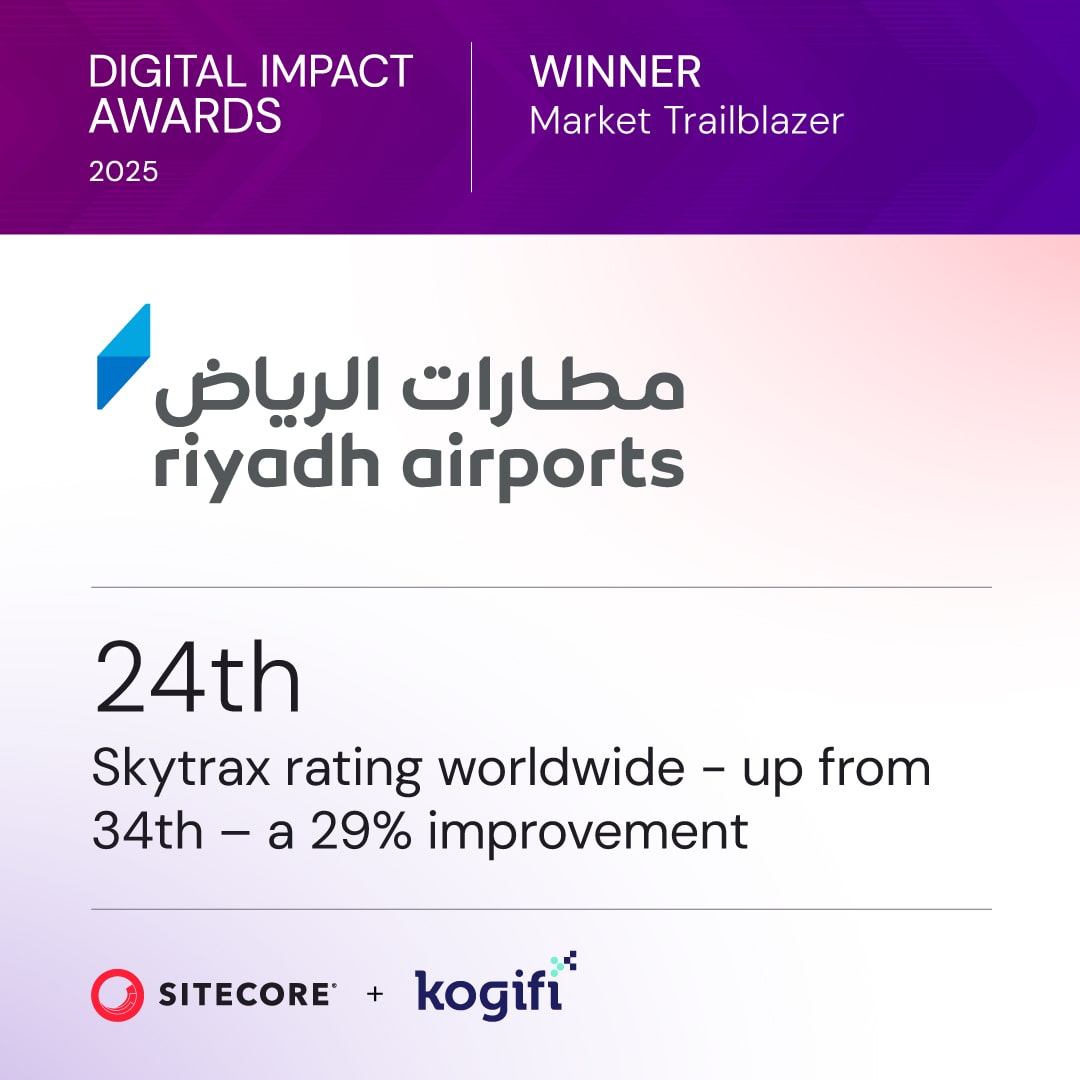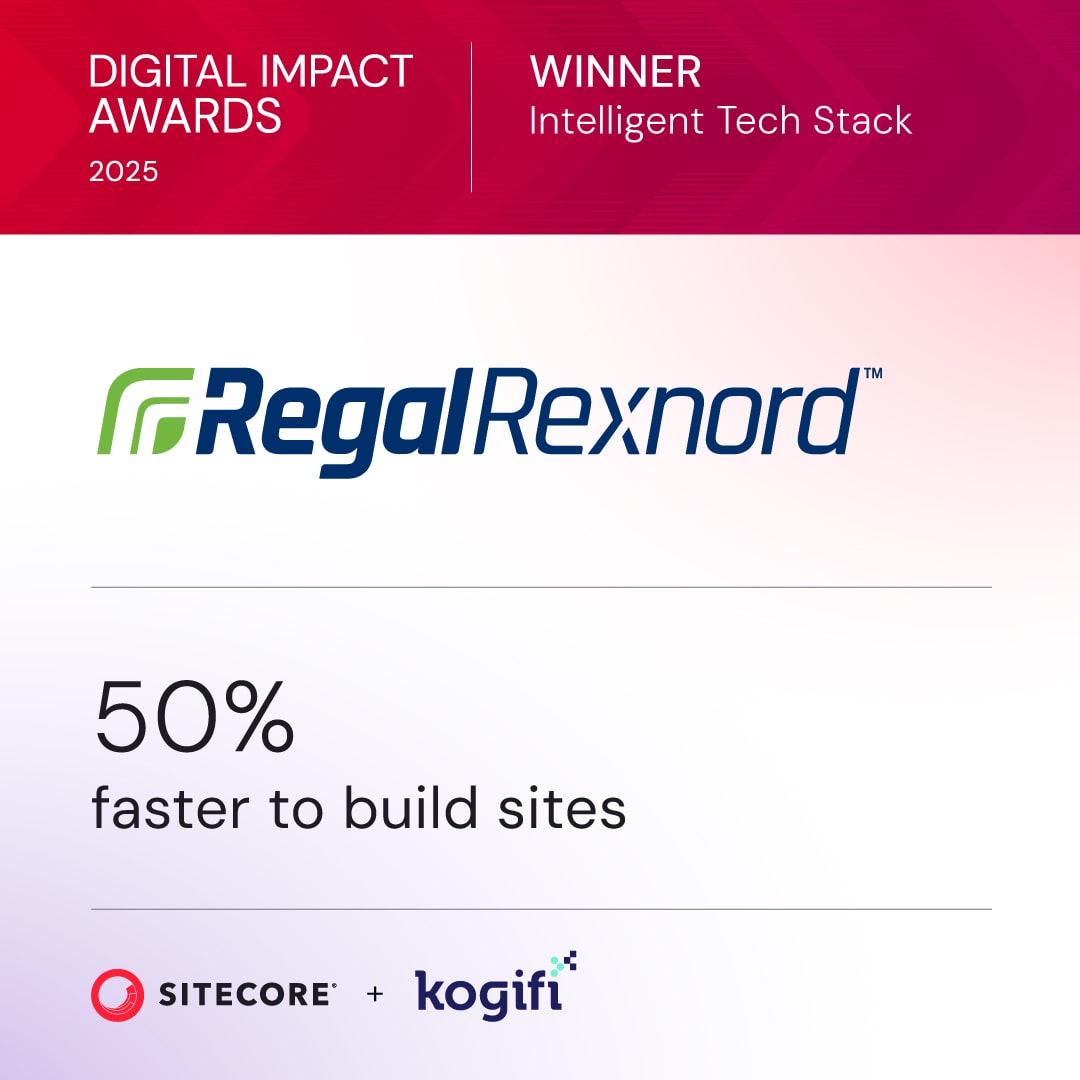A cloud based content management system (CMS) is a platform that lives entirely online, hosted by a third-party provider. This means you can create, manage, and publish digital content without ever having to install or maintain software on your own servers. It’s a game-changer that frees businesses from the headaches of managing physical hardware, offering instant access and far more flexibility.
Why Modern Businesses Need a Cloud Based CMS
Let's cut through the technical jargon. Think of a cloud based content management system like this: it's the Netflix of your digital content. Instead of managing a massive, physical collection of DVDs—which is like an on-premise server—you just log in and access everything instantly from your provider. This simple but powerful shift is exactly why so many businesses are ditching costly hardware and the constant cycle of maintenance.
This model delivers the kind of accessibility, scalability, and agility modern businesses need to survive and thrive. To really get a handle on this, it helps to understand the different cloud service models like IaaS, PaaS, and SaaS, as they form the backbone of these powerful solutions.
The infographic below really drives home the core benefit: instant access to your digital world, no matter where you are.

As you can see, the freedom to work on any device, in any location, is central to what makes a cloud CMS so valuable.
The Shift To Agility And Innovation
Traditional, on-premise systems chain your IT team to an endless cycle of updates, security patches, and hardware upkeep. This doesn’t just drain your budget; it pulls your most valuable technical minds away from innovation and traps them in maintenance mode. A cloud-based CMS completely flips this dynamic.
Platforms built for the cloud handle all the infrastructure headaches for you. This frees up your teams to focus on what actually moves the needle: creating incredible digital experiences that connect with customers. The result? You get campaigns and new digital products to market faster. The benefits of enterprise content management really crystallize when you're no longer bogged down by server management.
A cloud CMS eliminates the operational friction of traditional software. It transforms content management from an IT burden into a strategic asset that fuels business growth and customer engagement.
Meeting Modern Market Demands
The digital world moves fast—way too fast to wait for server upgrades. A cloud based content management system gives you the elasticity to handle sudden traffic spikes from a viral campaign or seasonal demand, all without any manual intervention. This kind of agility isn't a luxury anymore; it’s a competitive necessity.
The market trends tell the same story. The global CMS market is on a steep upward trajectory, expected to surge from around USD 45.9 billion in 2024 to a staggering USD 133.5 billion by 2033. This explosive growth is being driven almost entirely by cloud platforms that offer scalable, flexible, and cost-effective solutions for businesses of all sizes.
To give you a better sense of how these two approaches stack up, here’s a quick comparison.
On-Premise CMS vs Cloud Based CMS A Quick Comparison
This table breaks down the fundamental differences between the old way of doing things (on-premise) and the modern cloud-based approach. It’s a high-level look at what changes when you make the switch.
As you can see, the cloud model is built for a world that demands speed, flexibility, and efficiency. It’s less about managing technology and more about using it to achieve your business goals.
The Strategic Benefits of a Cloud-First CMS
Moving to a cloud-based content management system is about so much more than just ditching your server racks. The real win is measured in growth, agility, and the freedom to actually innovate. Imagine launching a massive campaign and watching your site handle a huge traffic spike without a single hiccup—that’s the kind of power cloud scalability delivers.
Picture your IT team building exciting new digital products instead of spending their nights patching software. That’s the reality when you’re on a true cloud-native platform that handles updates automatically. These aren't just technical perks; they translate directly into tangible business results.
Driving Down Costs and Accelerating Growth
One of the biggest draws to the cloud is a dramatically lower Total Cost of Ownership (TCO). Traditional on-premise solutions demand a massive upfront investment in servers, software licenses, and the real estate to house it all. And that’s just the start of the financial drain.
With a cloud CMS, especially a Software-as-a-Service (SaaS) model like Sitecore XM Cloud, those huge capital expenses just disappear. Instead, you get a predictable, operational subscription fee. This approach gets rid of the hidden costs tied to maintenance, security, and the specialized staff needed to babysit complex infrastructure. That budget is now free for strategic marketing and development that actually moves the needle.
On top of that, integrating tools like automated documentation tools can really boost efficiency, cutting down on manual updates and making sure content is always current—a huge strategic plus.
This financial shift directly fuels a faster time-to-market. Since the cloud provider manages all the backend infrastructure, your teams can get new websites, apps, and campaigns out the door in a fraction of the time it would take with an on-premise setup. This agility means you can jump on market opportunities while they’re still hot.
Unlocking Scalability and Ensuring Resilience
Perhaps the most compelling benefit is the near-infinite scalability. A cloud-first CMS automatically flexes its resources to meet whatever demand comes its way.
- Effortless Traffic Management: Your website can handle a sudden flood of visitors from a viral post or a holiday sale without crashing or even slowing down, keeping the customer experience flawless.
- Global Reach, Instantly: Content gets delivered lightning-fast to users anywhere on the globe through a Content Delivery Network (CDN), a standard feature on any top-tier cloud platform.
- Future-Proof Growth: As your business expands into new markets or launches new digital products, the platform scales right alongside you. No need for a massive, disruptive infrastructure overhaul.
This elasticity comes hand-in-hand with incredible resilience. Cloud providers like Microsoft Azure, which powers many Sitecore and SharePoint solutions, offer robust disaster recovery and sky-high uptime guarantees. Your digital presence becomes more secure and dependable, protecting both your brand's reputation and your revenue stream.
By offloading infrastructure management to a cloud provider, organizations transform their IT teams from system maintainers into strategic innovators. This shift is fundamental to competing effectively in a fast-paced digital economy.
The market is already voting with its wallet. The cloud enterprise content management (ECM) market is on a steep climb, projected to grow from USD 34.17 billion in 2024 to USD 87.01 billion by 2030. This explosive growth shows just how many businesses are embracing flexible and cost-effective cloud models. You can dig into the numbers yourself by reviewing the full market analysis on Mordor Intelligence.
Even for internal collaboration, platforms like SharePoint Online run on these same cloud principles. It creates a secure, scalable, and accessible space for document management and teamwork. This ensures your internal operations are just as agile and resilient as your customer-facing experiences, building your entire content strategy on a foundation of speed and reliability.
Building Experiences with Sitecore's Composable DXP
When you're ready to move past just managing content and start building truly sophisticated digital experiences, platforms like Sitecore enter the conversation. This isn't just another cloud based content management system. It's a full-blown Digital Experience Platform (DXP) that has been reimagined for the cloud-first world we live in. The big idea here is to ditch the old, rigid, all-in-one systems for a more flexible, "composable" approach.
Think of it like building with LEGOs instead of being handed a pre-built model. A composable DXP lets you hand-pick the best tools for your specific needs—content, commerce, personalization—and then snap them together seamlessly. This modularity is where enterprise digital strategy is heading, giving businesses the power to adapt and innovate at a speed monolithic systems just can't keep up with.
Understanding MACH Architecture The Engine of Agility
At the very core of Sitecore's modern cloud platform is MACH architecture. This isn't just some techy buzzword; it's a foundational philosophy that shapes how the entire system works, giving both marketers and developers an incredible amount of freedom.
Each letter in MACH stands for a core principle:
- Microservices: The platform isn't one giant piece of software. It's built from small, independent services that each do one specific job. This means you can update or even swap out one piece without bringing the whole system crashing down.
- API-first: Every component talks to the others through APIs (Application Programming Interfaces). This makes it a breeze to connect other best-in-class tools, whether it's your CRM, analytics engine, or something else entirely.
- Cloud-native: The software was born in the cloud. It's designed from day one to take full advantage of the cloud's scalability, reliability, and global reach.
- Headless: This one's a game-changer. It separates the back-end content (the "body") from the front-end presentation (the "head").
This headless approach means your content is treated like pure, structured data. It's ready to be sent anywhere—a website, a mobile app, a smartwatch, or even a screen in a physical store. This is the secret sauce for creating genuine omnichannel experiences.
Introducing Sitecore XM Cloud
Sitecore XM Cloud is the flagship product that brings this modern vision to life. As a pure SaaS (Software-as-a-Service) platform, it blends the powerful content management Sitecore is famous for with the speed and flexibility of a cloud-native, headless architecture. Marketers get intuitive visual editing tools, while developers get to use the modern frameworks they love.
Here’s a snapshot from Sitecore that captures their focus on using this composable platform to create digital moments that truly stick with customers.
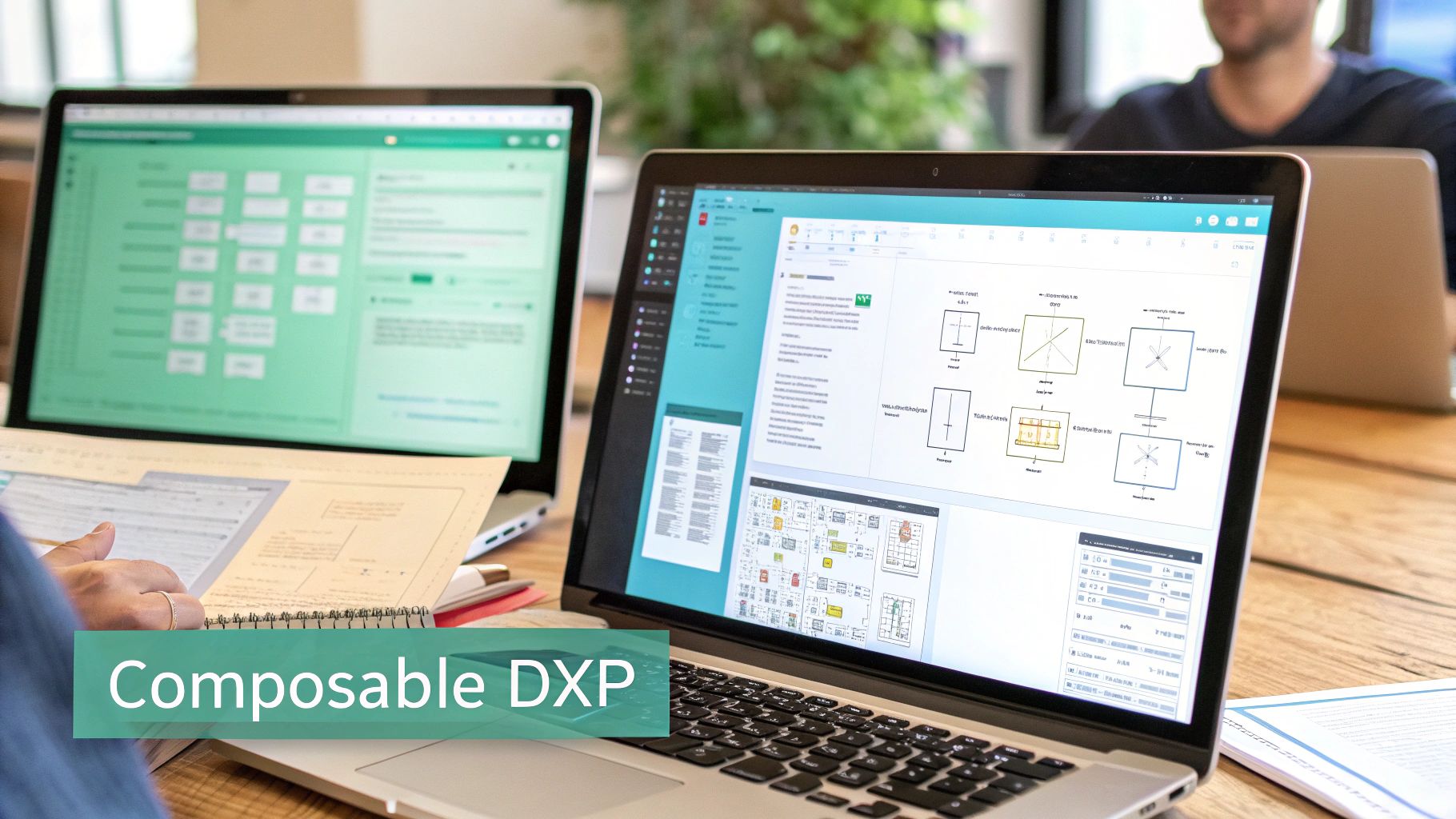
This really drives home the point that the ultimate goal isn't just to manage content, but to forge a personal connection with customers at every single touchpoint.
To bring this powerful platform to life, Sitecore’s composable DXP is built around several core products working in concert. Each one plays a specific role, from managing content and assets to personalizing customer journeys.
Key Products in the Sitecore Cloud Ecosystem
Together, these products form a cohesive ecosystem that allows businesses to build a digital experience stack perfectly suited to their needs, without being locked into a one-size-fits-all solution.
Centralizing Assets with Sitecore Content Hub
One of the biggest headaches for large organizations is keeping track of a massive amount of digital assets—images, videos, product info, you name it. Sitecore Content Hub tackles this problem head-on by acting as a single source of truth for all your content and assets.
Sitecore's composable strategy empowers organizations to assemble their perfect digital experience stack. Instead of being locked into a single vendor's ecosystem, you gain the freedom to integrate best-in-class tools, ensuring your platform evolves with your business needs.
But this is way more than just a digital asset manager (DAM). It’s a solution that combines content planning, creation, and management into one collaborative space. By bringing these processes together, Content Hub ensures brand consistency and drastically cuts down the time teams waste hunting for or recreating assets.
For any business serious about mastering this approach, our complete guide on composable DXPs for scalable personalization offers a deeper dive into building a digital strategy that’s both flexible and ready for the future.
When you combine XM Cloud for delivering experiences with Content Hub for managing assets, you get a powerful, integrated ecosystem. This is what makes Sitecore more than just a CMS—it's a future-proof platform for creating hyper-personalized customer journeys at enterprise scale, empowering marketing and development teams to innovate faster than ever.
Using SharePoint Online for Internal Content Management
While Sitecore is brilliant at crafting the external, customer-facing digital experiences that define your brand, a truly complete cloud based content management system needs to look inward, too. This is where SharePoint Online steps in, acting less like a simple tool and more like the central nervous system for your entire digital workplace. It's an Enterprise Content Management (ECM) powerhouse built to organize, secure, and energize collaboration inside your company.
Think of it this way: if Sitecore builds your brand's public face, SharePoint builds its internal skeleton. As a native part of the Microsoft 365 world, its real magic comes from how seamlessly it connects with the tools your teams already live in every day. SharePoint is the foundational content layer for Microsoft Teams, OneDrive, and the entire Office suite, creating one undisputed source of truth for all corporate information.

This seamless integration is what elevates SharePoint from a glorified document folder to a living, breathing hub for collaboration.
Building the Digital Workplace Hub
SharePoint Online gives you the framework to build sophisticated company intranets and secure, private team sites. These aren't just static pages gathering digital dust; they are dynamic environments where employees find company news, access critical documents, and work together on projects in a controlled and organized space.
A well-designed SharePoint intranet quickly becomes the single destination for everything from HR policies and benefits information to the latest departmental updates. For project teams, dedicated sites offer a secure sandbox to share files, track tasks, and keep a complete, versioned history of their work—all of it automatically tracked and auditable.
SharePoint Online’s greatest value is in its ability to structure the unstructured. It takes the chaos of shared drives and email attachments and organizes it into a governed, searchable, and secure content ecosystem.
This structured approach is non-negotiable for large organizations. It guarantees the right people have access to the right information at exactly the right time, which is a direct line to better productivity and less risk from unmanaged data. For a deeper dive, our guide answering the common question, "What is SharePoint Online?" is a great place to start.
Enforcing Governance and Managing Lifecycles
Beyond just organizing files, SharePoint delivers serious muscle for document lifecycle management and governance. This is an absolutely critical function for any organization that handles sensitive information or needs to meet strict regulatory compliance standards.
You can set up firm rules and automated workflows that dictate how documents are created, reviewed, approved, and eventually archived or deleted. These aren't just suggestions—they are enforceable policies that work quietly in the background.
- Document Governance: Apply retention policies to make sure documents are kept for the required period and then disposed of securely, helping you meet legal and compliance mandates without a second thought.
- Approval Workflows: Build automated, multi-stage approval processes for crucial documents like contracts or marketing materials. Nothing gets published without the proper sign-off.
- Knowledge Bases: Create centralized knowledge bases with controlled publishing rights. This allows subject matter experts to contribute their knowledge while maintaining a high standard of quality and accuracy for everything that goes live.
By putting these features to work, SharePoint Online becomes far more than a file-sharing service. It transforms into a strategic asset that helps you mitigate risk, ensure consistency, and preserve vital corporate knowledge. This internal strength is the perfect complement to Sitecore’s external focus, giving you a comprehensive content strategy that speaks to every audience, inside and out.
What to Look for in a Modern Cloud CMS
When you're choosing a cloud-based content management system, you have to look past the basic content creation tools. For any serious enterprise, the platform needs to be a strategic engine that drives growth, ensures rock-solid security, and actually helps you connect with your customers. A modern cloud CMS isn't just about what it does, but how it empowers your teams to deliver incredible digital experiences, time and time again.
This is where platforms like those from Sitecore really shine. They're built with a deep understanding of enterprise needs and a core belief that content is more than just words and pictures on a screen—it's the fuel for every single customer interaction. The truly essential features are the ones that make sophisticated, secure, and seamless experiences possible at every touchpoint.
The industry's shift to these powerful systems is impossible to ignore. A significant portion of websites worldwide now run on a content management system, pushing the market toward a projected value well into the billions by 2025. This underscores the critical importance of choosing a platform with deep, enterprise-ready capabilities.
Sophisticated Personalization Engines
A genuinely modern cloud CMS has to move beyond one-size-fits-all content. It needs a powerful personalization engine that uses data to tailor experiences for individual users, right in the moment. This is a core strength of the Sitecore ecosystem, especially with its Sitecore Personalize component.
Instead of just showing different content to broad audience segments, these advanced systems can do so much more:
- Track User Behavior: They watch clicks, page views, and interactions across sessions to build a detailed picture of who each user is.
- Trigger Real-Time Actions: Based on a user's current behavior, the system can instantly change content or offers. For example, it might show a targeted promotion after someone views a specific product category three times.
- Leverage AI and Machine Learning: It can use predictive analytics to figure out what content a user is most likely to want next and deliver it proactively.
This is what transforms a website from a static brochure into a dynamic, one-on-one conversation with every single visitor.
Robust Security and Compliance
For any enterprise, security isn’t just a feature; it's the foundation of everything. A top-tier cloud CMS must be built on rigorous security protocols and have the compliance certifications to prove it. This gives you peace of mind and ensures that sensitive customer and company data stays protected.
An enterprise-grade cloud CMS must treat security as a core architectural principle. Certifications like SOC 2 are not just badges; they are proof of a vendor's commitment to maintaining a secure and reliable operational environment, which is critical for protecting brand reputation and customer trust.
For instance, platforms like Sitecore XM Cloud and Microsoft's SharePoint Online are hosted on world-class infrastructure like Microsoft Azure, which comes with a whole suite of built-in security measures. When you're evaluating options, look for platforms that offer:
- SOC 2 Compliance: This is a crucial certification that shows a provider can securely manage data to protect their clients' interests and privacy.
- Role-Based Access Control (RBAC): This gives you granular permissions, ensuring users can only see and edit the content and features relevant to their specific roles.
- Proactive Threat Monitoring: You want a system that offers continuous, 24/7 monitoring for any suspicious activity or potential security threats.
These features are absolutely non-negotiable for any organization that's serious about protecting its digital assets.
True Omnichannel Delivery
Finally, a modern cloud CMS must be able to deliver content to any channel or device, without a hitch. This is the promise of a "headless" or composable architecture, a concept that’s central to Sitecore's strategy. By separating the back-end content repository from the front-end presentation layer, your content becomes structured data that can be pushed anywhere through an API.
This means the exact same piece of content you create in the CMS can be instantly delivered to your corporate website, a mobile app, a digital kiosk, or even an IoT device. This "create once, publish everywhere" approach is essential for maintaining brand consistency and efficiency in an increasingly fragmented digital world. It’s what elevates a platform from a simple web CMS to a true enterprise content hub.
Your Roadmap for Migrating to a Cloud CMS
Switching to a cloud based content management system isn’t just a technical “lift-and-shift.” Think of it as a strategic business project that needs smart planning, clear communication, and a solid grasp of your entire content ecosystem. If you rush it, you're setting yourself up for budget headaches, frustrated teams, and a disappointing ROI.
The first move is always a full-scale content audit. Before you even think about moving data, you need to know exactly what you have. Where does it live? Who owns it? And is it even still useful? This step is crucial for spotting all the redundant, outdated, and trivial content that can be ditched or archived, shrinking your migration scope and saving you a ton of time and money.
Once you’ve cleaned house, it's time to build a new governance model. This is your rulebook for creating, approving, and managing content in the new cloud CMS. It clarifies who does what, making sure the quality and consistency you establish at launch actually stick around for the long haul.
Planning the Technical Migration
With a tidy content inventory and a clear governance plan, you can finally dive into the technical side of things. This is where precision is everything, especially when you're moving from an old, clunky system to a powerful platform like Sitecore.
Here are the key technical hurdles to clear:
- Content Mapping: You have to painstakingly map every content type and field from your old system to the new structure. For instance, a simple "News Article" in your legacy system might become a more detailed component in Sitecore, with specific fields for the author, publish date, and SEO metadata.
- Redirection Strategy: A rock-solid 301 redirect plan is absolutely non-negotiable. It's the only way to protect your hard-earned SEO authority. Every single old URL needs to be mapped to its new home to prevent broken links and a nosedive in your search rankings.
- Phased Approach: A "big bang" migration—where everything goes live at once—is just asking for trouble. It's far smarter to migrate in phases, tackling one site section or business unit at a time. This approach minimizes disruption and gives your team a chance to learn and adapt as you go.
This complex journey requires expertise and careful navigation to ensure a smooth transition with maximum business benefit.
Managing Change and Ensuring Success
Probably the most overlooked part of any migration is change management. Your teams don’t just need training on how to use the new system; they need to understand why the change is happening. You have to show them how the new cloud CMS will make their jobs easier and help them get better results.
A successful migration isn’t just about flipping a switch on launch day. True success is when your teams actually adopt the new platform, using its full capabilities to hit business goals and create amazing customer experiences.
Platforms like Sitecore offer a wealth of training resources and expert support to help ease this transition. By focusing on a phased rollout and keeping internal communication strong, you can keep business disruptions to a minimum and ensure your organization enjoys the long-term benefits of a modern cloud based content management system.
Got Questions About Cloud CMS?
Moving to a cloud-based content management system is a big step, and naturally, it comes with a lot of questions. Let's tackle some of the most common ones we hear, especially when it comes to platforms like Sitecore and SharePoint.
Is SharePoint a True Cloud CMS?
Yes, but its purpose is very specific. Think of SharePoint Online as a powerhouse for your internal world—it’s a full-blown cloud CMS built for enterprise content management (ECM).
While Sitecore is busy crafting amazing customer-facing websites, SharePoint is the engine running your digital workplace. It’s where you structure internal knowledge, manage document workflows, and power your company intranet, all securely within the Microsoft 365 cloud. They’re both cloud CMS platforms, just built for different audiences.
Can We Personalize Content with a Cloud CMS?
Absolutely. In fact, that's one of the biggest reasons to make the switch. Advanced personalization is a core strength of modern platforms like Sitecore.
A cloud CMS like Sitecore XM Cloud is designed from the ground up to plug into a Customer Data Platform (CDP). This connection allows you to track user behavior in real-time and deliver content, offers, and entire experiences that are tailored to individual actions—not just broad, generic audience segments.
The real magic of a cloud-native DXP is its ability to centralize customer data and use it instantly for personalization. It transforms a standard website into a highly relevant, one-to-one conversation.
How Does a Cloud CMS Handle Security?
Security isn't an afterthought; it's baked into the foundation of any enterprise-grade cloud platform. A top-tier cloud based content management system like Sitecore XM Cloud or SharePoint Online runs on world-class infrastructure, like Microsoft Azure, which brings multiple layers of defense to the table.
This means you get proactive threat monitoring, solid disaster recovery plans, and regular, automated security updates that you no longer have to worry about managing yourself. On top of that, these platforms offer strict role-based access controls and meet key compliance standards like SOC 2, so you can be confident your data is locked down tight.
At Kogifi, we live and breathe powerful cloud CMS solutions like Sitecore and SharePoint. Let us help you build a secure, scalable, and personalized digital experience that drives real business results.

















